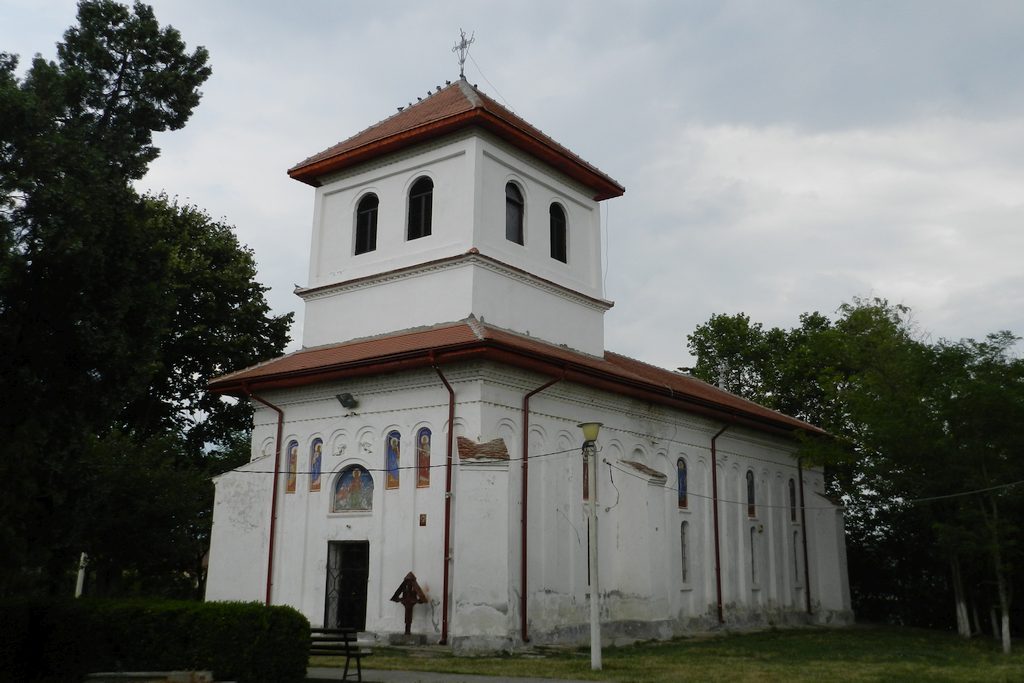

The parish church dedicated to “St. Paraschiva” was built in 1529 by Vlad Banu , Dumitru Pârcălabu and Balica Spătaru – early founders of Monastery Calu (Pr. D. Balasa). It was repaired in 1896, 1932, 1941, and 1960.
The church was built in a boat-shaped form, with a length of 24 meters and width of 6 meters, the ratio between length and width being of 1/4. The interior of this monument consists of 4 rooms: porch, narthex, nave and altar. Both the exterior walls and the walls that separate the porch from the narthex exceeding 1 meter in thickness. In 1930, the base was rebuilt and some of the furniture. In 1941, after the 1940 earthquake, the church was reinforced by a system of longitudinal and transverse tension members, some buried, some apparent. This church, its age, has a history connected to Buzescu’s family and to Mihai Viteazul. It is believed that during the reign of Mihai Viteazul period there was an underground tunnel that connected Court Buzescu, located on west of the church, on the current location of Secondary School no. 1 of the village, and monastery Calui, located at just 3 km away to the southwest. This tunnel was a way of escape for the locals from the Turkish and other enemies.
The oldest inscription is the epitaph on the tombstone of Dumitru Pîrcălab Buzescu, which is located in the porch of – Cuvincioasa Paraskevi Church – in commune: „By mercy of God, here rests the deceased soul of me, Dumitru Parcalab Buzescu dead by the sword in the time of Moses Prince, May 5, 1529 “.
In the gallery of the most famous and powerful families of boyars in the county of Olt, the family Buzescu occupies a prominent place. Strejesti, Calui and Iancu Jianu, all the communes still keep, hundreds of years from the heyday of this important nation , numerous testimonies of the existence of these legendary figures. Buzescu’s family name is closely linked to that of Prince Michael the Brave, which Radu , Preda and Stroe served until his last moments. Buzeştii have been with the ruler during the fights for unification of the Romanian Principalities and they served this one even after his death.
Due to the involvement and the heroic deeds, any of the three brothers reached easily as ruler of the Romanian Country. But they preferred to support Radu Serban, governor of Michael the Brave’s Divan and a faithful follower of his great predecessor policy.
